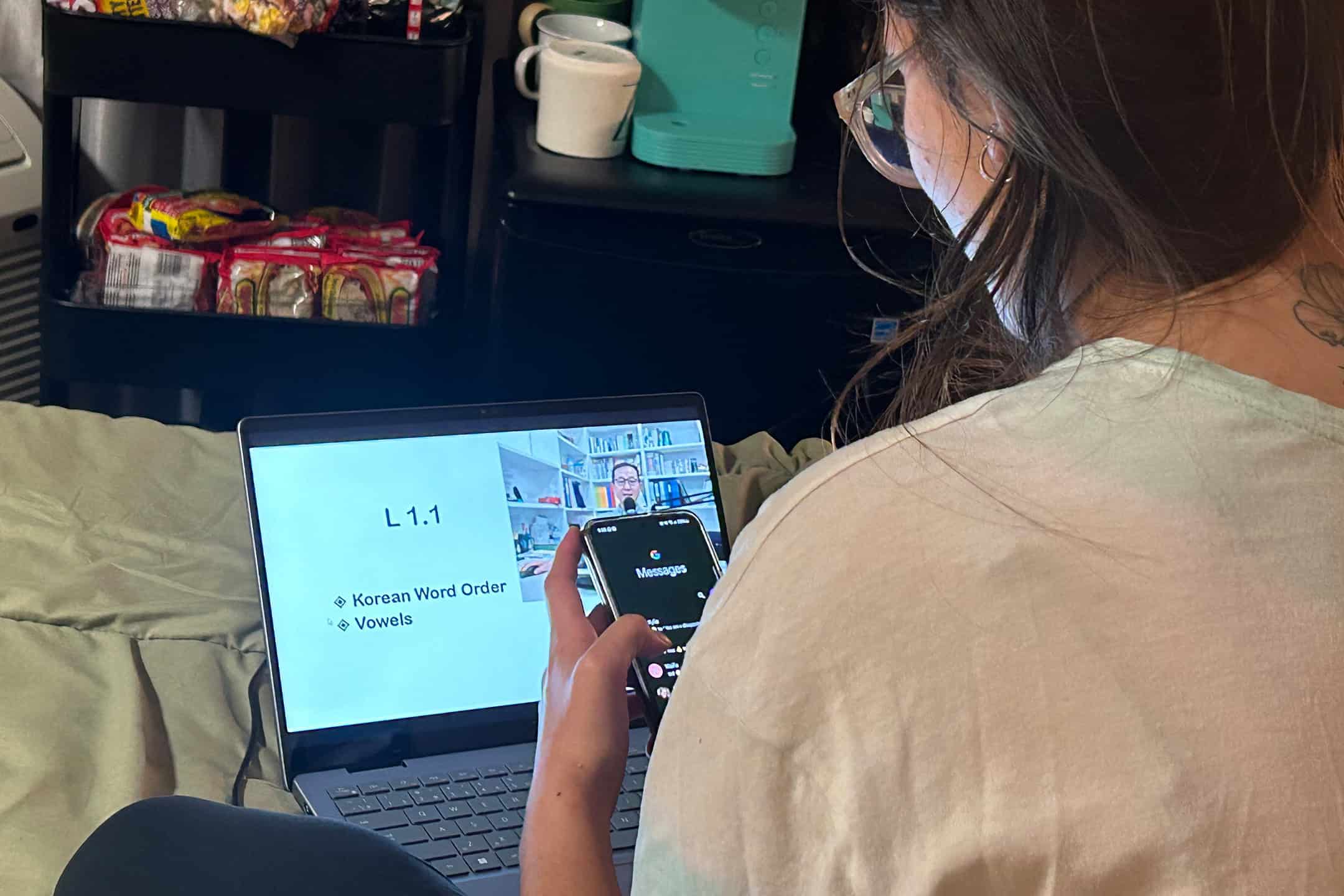As students head back to school this fall, their aspirations soar are strong and their dreams grow. Yet, there’s one dreadful distraction we can’t seem to outwit: the buzz, beeps, and dings of notifications tugging at the pocket of our pants. “It’ll just take a few seconds,” we say as we grab our phones. But those seconds often turn into minutes and hours as we jump from app to app, trapped in an endless and all-too-familiar cycle of struggling to return to work.
Social media platforms, such as TikTok or Instagram, use algorithms that condition our brains to crave quick bursts of content — shortening our attention span and making it easier for us to watch an hour’s worth of reels than to sit through a one-hour lecture. On our phones, when something bores us, we can simply scroll away. In real life, that option doesn’t exist.
The constant stream of algorithm-driven content makes it increasingly challenging for students to stay focused. A 2018 Pew Research Center survey found that 31 per cent of teenagers in the US lost focus in class due to cell phone use. Additionally, while doing homework, 51 per cent of teenagers watch TV, 50 per cent use social media, 76 per cent listen to music, and 60 per cent send text messages.
How are attention spans changing?
The growing social media addiction is fuelling a worldwide decline in attention spans. In an interview with the American Psychological Association, Gloria Mark, a psychologist and chancellor’s professor of Informatics at the University of California, Irvine, shared alarming statistics from her study on global attention spans.
Mark noted that the average global attention span in 2004 was 2.5 minutes, which dropped to 75 seconds by 2012, and has since decreased to 47 seconds over the past 5–6 years. However, attention spans are not uniform. According to Mark, they consist of both focused attention and rote activity, which is repeated actions with little required thinking.
In focused attention, individuals are actively and consciously engaged in a task, such as reading a complex article. In contrast, rote activities involve tasks that are less challenging, like playing video games or scrolling through social media, which accounts for most screen time.
A shrinking attention span causes people to switch their focus between tasks more frequently. Mark hypothesized that attention switching would potentially increase stress levels, as measured by elevated blood pressure, and increase the likelihood of making errors while completing tasks. Mark’s correlation study revealed that constant attention shifting due to compromised attention spans led participants to make more errors, require more time, and experience greater stress.
Remedying the attention span: Importance of balance, visualization, and our environments
While excessive attention switching can be detrimental to mental performance and stress levels, a balanced combination of focused tasks and rote activities can replenish energy, prevent burnout, and enhance attentional capacity. For example, scheduling breaks after paragraphs while writing long and tedious essays may help ideas flow better, reduce stress, and maximize efficiency.
Balancing focus and breaks is essential — especially in a technology-driven world where managing distractions is crucial for productivity. By understanding how to use breaks effectively and recognizing triggers for losing focus, we can better integrate technology into our lives while maintaining productivity and well-being.
In an interview with CBS News, Mark recommends exploring the reasons behind our loss of focus. By isolating the causes of distractions, individuals can develop better strategies to improve their attention spans. Additionally, Mark suggests that creating a mental visualization of achieving all daily goals can boost motivation and reduce procrastination.
As Adam Brown, co-director of the Center for Attention, Learning, & Memory at St. Bonaventure University, states, “At a neurological level, I wouldn’t guess there’s this massive thing happening… such that people have shorter attention spans. It’s the environment we live in. It’s the phones.”
Ultimately, improving your attention span is achievable by ensuring adequate sleep, taking regular breaks, and spending time outdoors. Sleep is a crucial component of attention, as it directly affects your ability to stay focused. Quality sleep is best achieved in a quiet, dark, and comfortably cool environment. Avoiding caffeine and late-night naps also promotes brain health.
Reclaiming control over our attention is no longer just about resisting distractions — it’s about reshaping the activities and environments we engage in. The key is not to vilify the tools that distract us, but to use them with intention. So, the next time a notification tempts you to scroll, remember this: every moment you take to pause and refocus is a victory for your attention. Your attention, after all, is a valuable resource. Guard it wisely.


